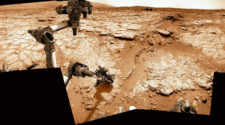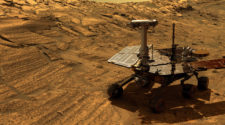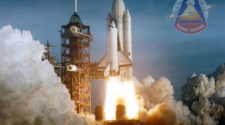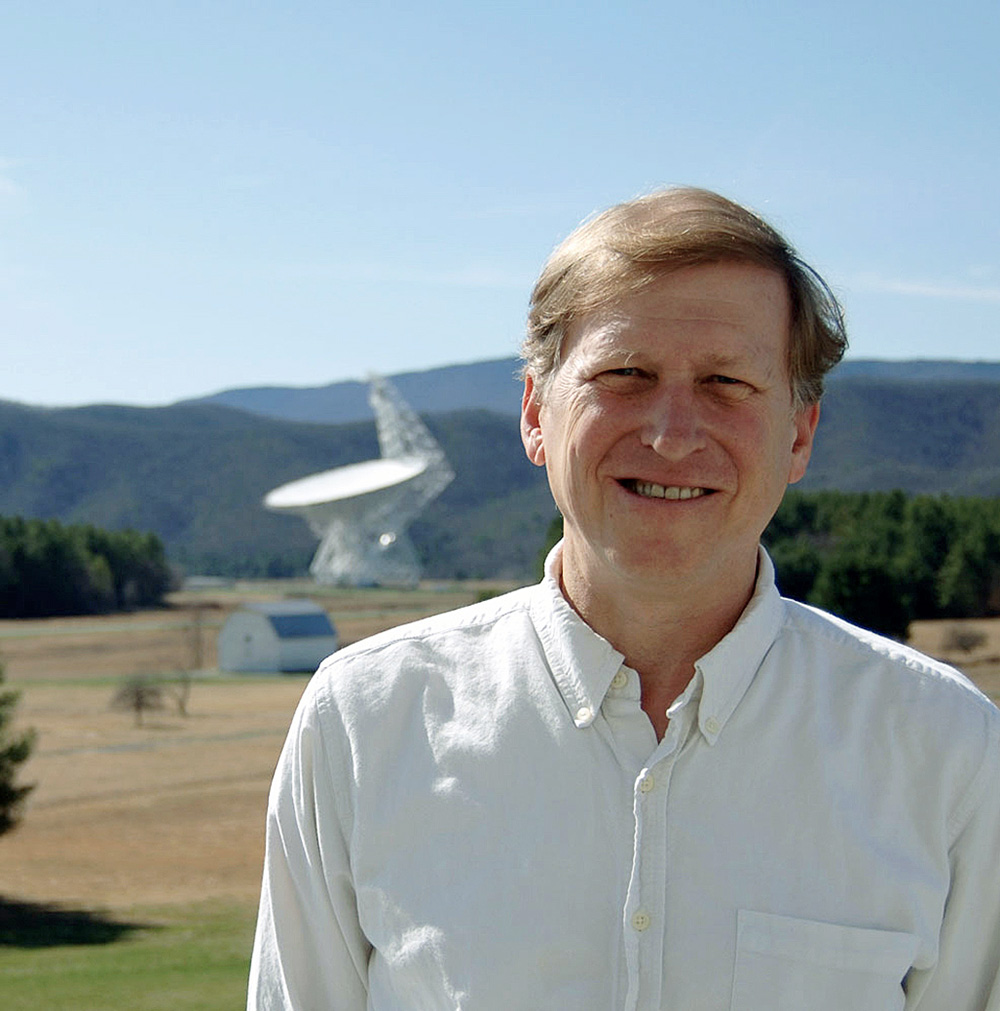
Stargazing to discover secrets of the Milky Way
Dr. Felix James (Jay) Lockman has spent the past two decades probing the origin of the Milky Way. He conducts his research from a rural area in West Virginia, a special place for radio astronomy that is unmatched anywhere else in the United States, using the Green Bank Telescope of the National Radio Astronomy Observatory.
Q: The Green Bank Telescope is at an observatory in West Virginia that is unlike most other observatories in the world. Why is that?
Lockman: “Green Bank is unique. It is a radio astronomy observatory, so instead of being on a mountain peak, it’s in a valley that’s surounded by the Appalachian Mountains and national forests. The mountains protect us from manmade radio waves that would interfere with the very faint radio signals coming from the universe. Just as optical observatories have to be concerned with light polution, we need to be in a fairly isolated place with good shielding from radio wave interference.
“We have not only our mountains for shielding, but also the National Radio Quiet Zone. When the Observatory was established more than 50 years ago, the National Radio Quiet Zone was created around it, within which new transmitters are controlled so that they don’t interfere with the radio telescopes. This is a unique region in the United States. We don’t have cell phone reception in the valley and we don’t have wireless at the Observatory. People one valley over can have it, but as you get closer and closer to the Observatory, the restrictions start to kick in. It makes Green Bank unusual, but a very good place to do radio astronomy.
“Being in such a rural area has its advantages and disadvantages. I guess the biggest disadvantage – unless you think of the absence of cell phones as a disadvantage – the biggest disadvantage is that you need to drive some distance to do routine shopping.
“It’s rural America. Green Bank has the amazing juxtaposition of a facility with the absolute start-of-the-art, unique scientific instrumentation, in a very rural part of the East.”
Q: Is it true that common household items can interfere with the telescope?
Lockman: “Yes, it’s a funny thing. There are the intentional transmitters such as cell phone towers, TV stations and so on. But then there are things that unintentionally give off radio waves. Digital cameras for example. Sometimes an ordinary device begins to give off radio waves when it starts to malfunction, or behave abormally.
“When we detect these interfering signals, if it appears to us that they are coming from some local source, we have a van with antennas bristling out the top that can track them down. One very amusing example occured a few years back. It was a heating pad in a doghouse. The wet dog would come in and lie down on this heating pad that wasn’t designed to have a wet dog on it, and the thing would start to short out internally. The short was giving off bursts of radio waves that we were picking up. We replaced the dog pad with a new one that was waterproof, at no charge to the owner. That eliminated the interference, and probably saved the dog’s life at the same time.”
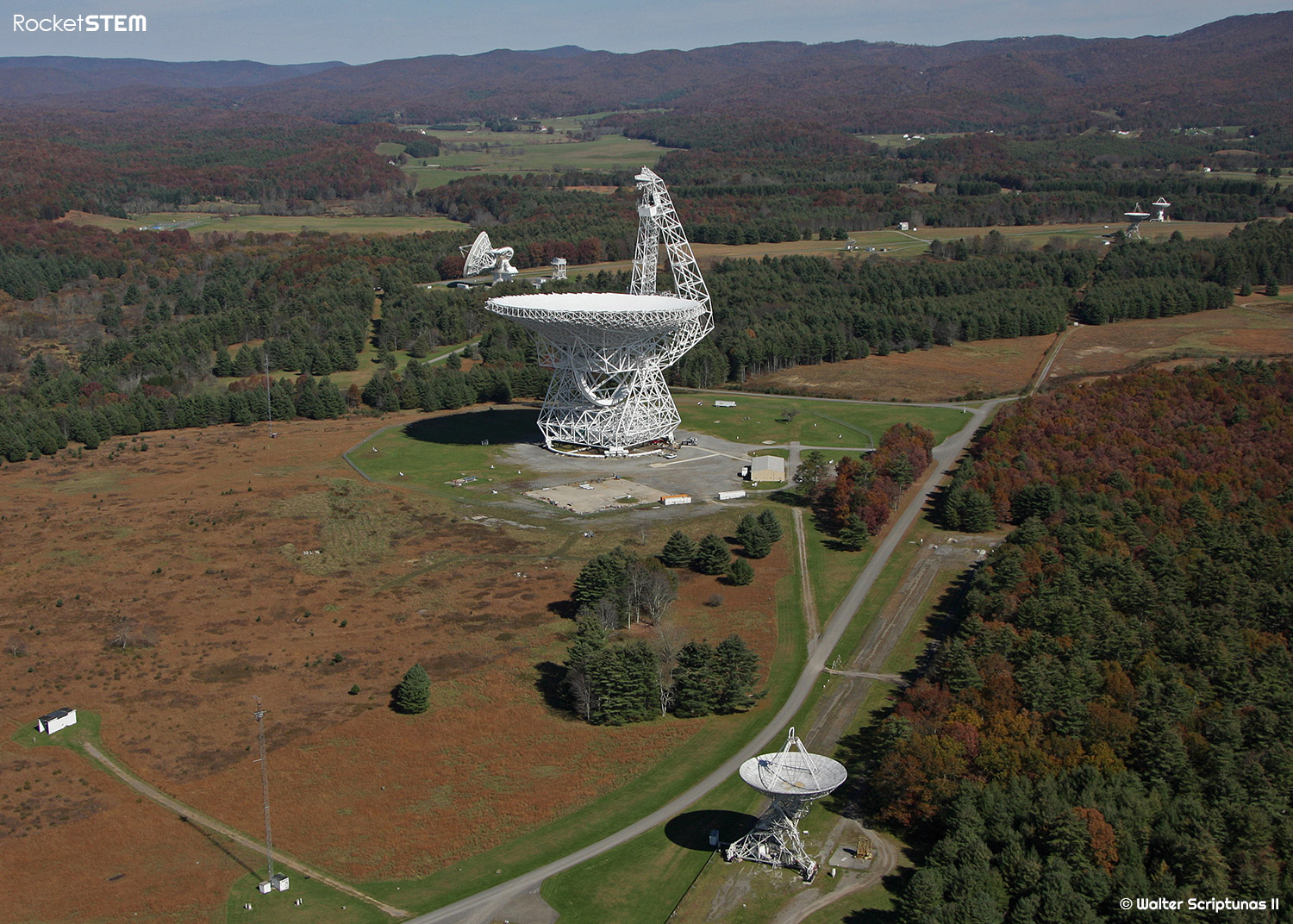
Q: The stereotypical view of an astronomer is a person who spends all night staring through a giant telescope at the stars. Is that a fair assessment?
Lockman: “No. In fact, because I study the radio waves that come in from space, I can use the radio telescope any time of the day or night. The daytime radio sky is dark, not bright blue like the daytime sky at visible wavelengths. When I’m on a project I might be scheduled from midnight to 2 a.m. or from 8 a.m. to midnight. You really can’t tell. It makes for a very different kind of cycle to your day.
“Most of the time, I am not using the telescope. The typical research projects I do use a telescope for just a few tens of hours, but then there’s many months of trying to understand what it is exactly that we found.”
Q: With such a vast universe, do astronomers simply focus on a single question, or are they multitaskers, seeking the answers to multiple questions at once?
Lockman: “Individual astronomers tend to do research in just one or two areas. I typically have several projects going at once, sometimes lasting several years. Between the time that you devise an experiment, and the time that you actualy get to use a telescope may be a year or more. So I’m really doing multiple projects and I have collaborators scattered around the world that are in complementary fields to radio astronomy.”
“One thing I’m very interested in is the extent of the Milky Way. How far out does it really go? And what is happening at the transition between galactic and intergalactic space? We can study that using radio waves. We can study that in the ultraviolet using data from the Hubble Space Telescope. We can study that in the infrared using data from other telescopes.
“If you go out on a clear night what you will see is stars in the Milky Way, our home galaxy. Stars like the Sun put out most of their energy at optical, visible, wavelengths. They shine in the visible and we can see that.
“In-between the stars, though, there are clouds of dust and gas that do not give off visible light, but shine very brightly in radio waves. And they can shine very brightly at infrared wavelengths as well. So the universe that we study with radio waves, is very complementary to the universe that we can study with visible light.
“You need all of this to put together a coherent picture of what’s going on. There are many things out there that don’t give off any visible light at all.”
Q: Does working on a radio telescope require a different skillset than an optical telescope?
Lockman: “You need a broad background in the physical sciences and mathematics, and above all an interest in doing astronomical research. Anyone who is smart enough and has the diligence to become a sucessful research scientist could certainly succeed in many other fields. But there is something very special about being at the edge of discovery, and about being the first person to learn something new about our Universe. That ability to discover something new appeals to me.
“The educational background needed to be an astronomer or astrophysicist is about the same regardless of what instruments you end up using. You do need to learn a number of very specific instrumental techniques, or if you are making theoretical calculations on a computer, you would need to learn some specialized numerical techniques.”
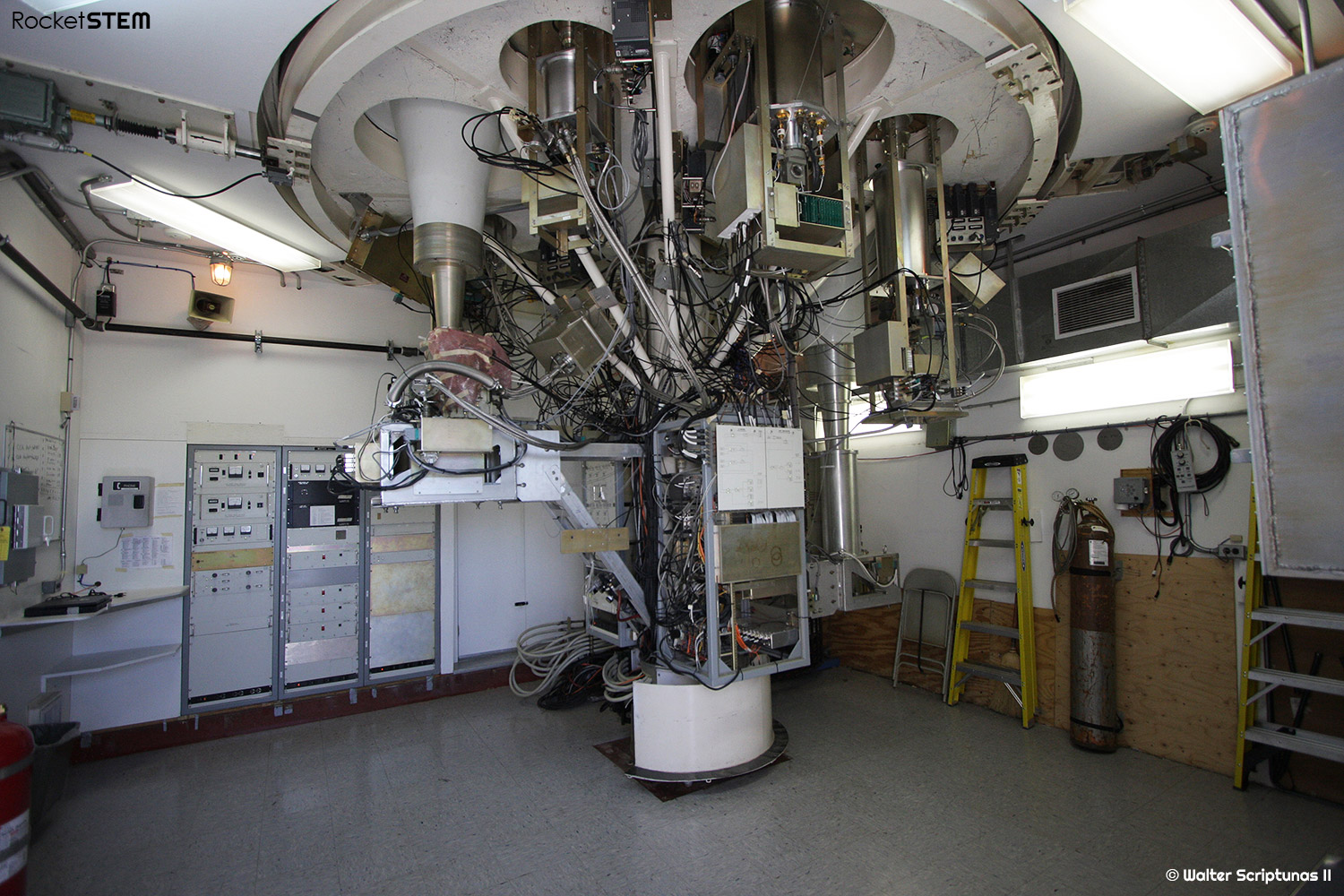
Q: Do we need both Earth-based and space-based telescopes?
Lockman: “It’s a great question. As we sit here on the surface of the Earth, we’re protected by the atmosphere from a lot of really nasty radiation that the sun gives off. We’re protected from most of the ultraviolet radiation and the X-rays and the high-energy particles. But conversely, if we want to study X-rays from the Sun, for example, we’ve got to get up above the atmosphere and go into space.
“There are two wavelength bands where the atmosphere is transparent and lets in radiation from outside. One is at visible wavelengths. After all you can see the stars at night and that means that the sky is transparent to visible light. The other is in the radio. The long wavelengths of radio waves, the low energy photons, come pretty much unimpeded through the atmosphere. Only at visible and radio wavelengths can astronomy be done from the ground. If you want to study ultraviolet, or most infrared emission, or X-rays, you’ve got to go into space. So again, it’s complementary.”
Q: How did you become an astronomer and end up working with the NRAO?
Lockman: “I was always interested in science. Luckily, I got to attend Drexel University in Philadelphia. It has a cooperative education program that puts students to work in industries related to their major field of study for six months out of each year. You actually work in your profession and get paid! In that program it took five years instead of four to get a degree, but it was worth it. I was lucky enough to get a position as an undergraduate research assistant at the National Radio Astronomy Observatory Headquarters in Charlottesville, Virginia.
“So as a teenager I was thrown into a research environment and just loved it. I really thrived on being around scientists who were active in research, and I loved the whole scientific endeavor. I would come to work on a Monday morning and there would be someone who had found something interesting that they wanted to talk about. It was a very exciting experience.
“I’ve also always enjoyed talking about research, and I’m more than happy to speak to people or make presentations and try to inspire the next generation — not necessarily to become astronomers, but to consider careers in science, technology, engineering or mathematics. A lot of kids these days don’t have good local role models that would allow them to think that maybe they could become a scientist. Or maybe they could become a mechanical engineer or a mechanic on a large structure like a radio telescope. It’s important to get out and get the message out.”
Q: There have been news reports that consideration is being given to closing the Green Bank Telescope facility for budgetary reasons. Is that true?
Lockman: “This is not our choice. This is something that the National Science Foundation is considering, and it would mean a massive reduction in the radio astronomy capability of the United States. There’s no other telescope that can do the majority of the research that is done here in Green Bank. It would be a major loss of scientific facilities for American astronomers.
“We operate the Geen Bank Telescope (GBT) for the National Science Foundation at no charge to the scientists who use it. Any scientist, whether at a small college or a large university, who has a good idea can write a proposal to use the GBT. These are evaluated by independent scientists, and the best proposals get time on the Telescope. In the last six years more than 1,000 individual scientists and their students have used the GBT for projects ranging from comets to cosmology. In recent years federal funding for most scientific research has fallen short of what is needed and the pressure on the GBT is symptomatic of a larger problem.”
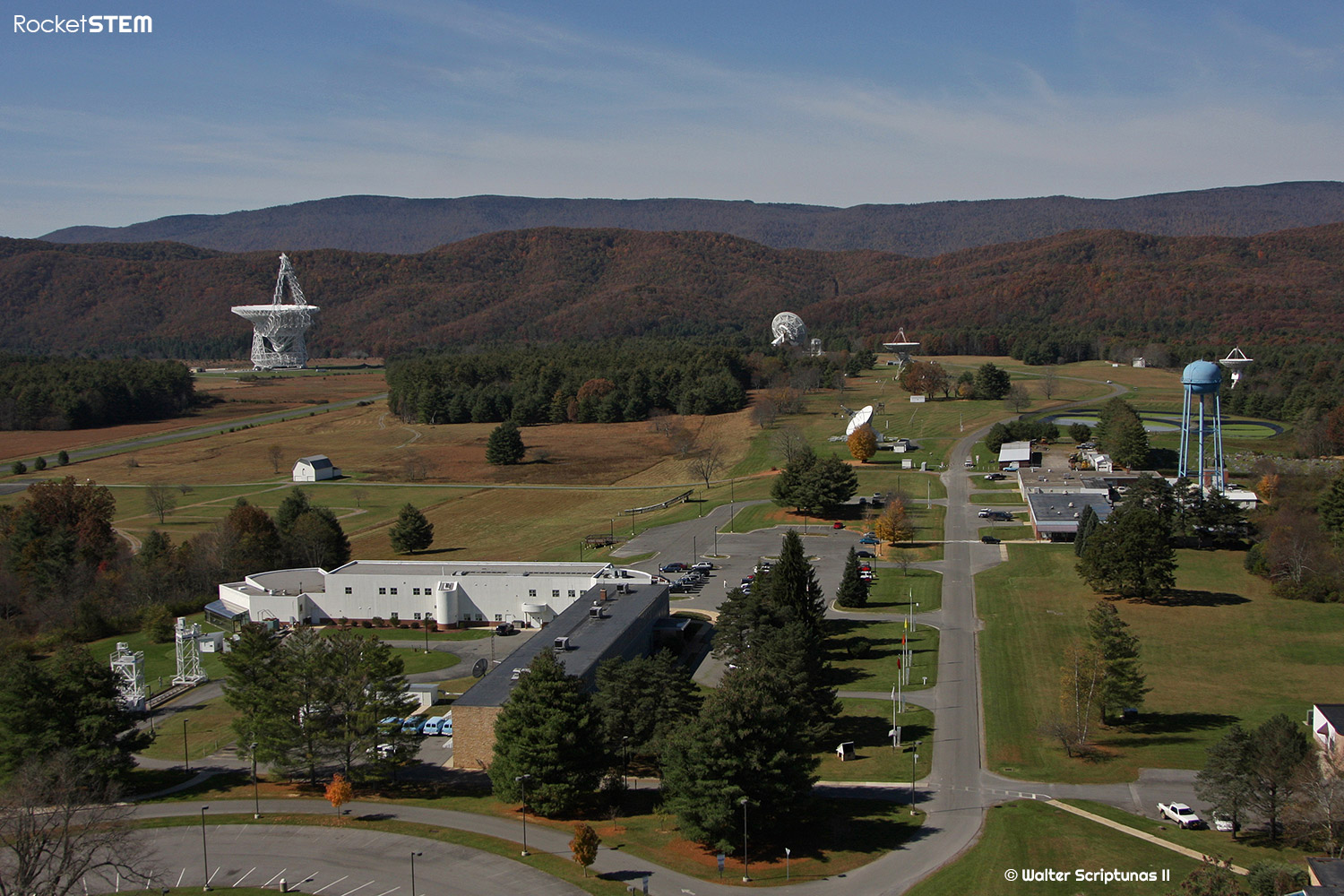
Q: Looking through a telescope seems to be only a small part of astronomy research. What else is involved?
Lockman: “Quite a bit. I’m sitting here at my desk in front of several computers. The amounts of data that we’re getting now can be so large that you need fairly hefty computational facilities to make any progress in analyzing them.
“One of the things that we do with astronomical radio signals is to try to turn them into images of the radio sky. If your eyes could see radio waves, how would the sky appear? Our eyes are very good at picking up patterns, and understanding relationships. We understand much more from points on a graph than from the same numbers in a table. The Observatory employs computer specialists who work in data visualization. It’s an increasingly important field in astronomy. We have electronics engineers here who build the one-of-a-kind receivers needed to pick up and amplify the very faint radio waves from space. We have software engineers that specialize in telescope control or in analyzing and processing the data that come in. There are mechanical engineers that design and repair the large dishes. It’s a diverse bunch that we have here and it takes a lot of different kinds of talent to run an observatory.”
Q: With the sheer amount of data being accumulated, is it possible that things are missed only to be discovered in future analysis of the data?
Lockman: “The data go into an archive so that people interested in looking at it again, or reprocessing it, can do so. But this brings up an interesting point related to your previous question. There are objects in space that we call pulsars: the collapsed remnant of a star that has exploded. A pulsar has about the same amount of matter as our Sun, which is a lot, but its size is just a few miles across. It’s very dense. Pulsars emit beams of radio waves. They rotate like a lighthouse and the radio beams sweep across the Earth. We can see pulsars to great distances and they are like little clocks out there in the Milky Way.
“We’re always interested in finding new pulsars, in new locations, and with new properties. But searching for pulsars is a very data intensive process. Once you scan an area of the sky with a radio telescope, looking for the faint pulses that might only be a milli-second long, you have this huge amount of data. Turns out that it is very efficient to use the human eye to look at this pattern to distinguish a signal from the noise.
“Scientists and educators at Green Bank and West Virginia University are collaborating with teams of high school students to examine pulsar search data and try to discover new pulsars. They’ve had really good success so far. Its genuine discovery, and once a team from a high school thinks they’ve found something, there’s a protocol they go through to confirm it. Eventually they get to use the Green Bank Telescope for re-observation and ultimate confirmation. A paper is just now being published in the Astrophysical Journal about the first half dozen or so new pulsars found by these teams of students.
“That is an example of high school students who are interested in science and doing real research. It’s not that different from how I started and it’s great.”
Q: One of the items you’ve been studying recently is a giant cloud of gas. What have we learned about it?
Lockman: “That’s a very interesting gas cloud. Its existence has been known for about 50 years. But until recently no one quite understood where it was or what it was.
“Using the Green Bank Telescope, we were able to map its hydrogen with the highest precision that has been possible. And what looked like a blob in earlier studies was revealed to be this huge structure that resembles a comet.
“We’re begining to get an understanding of this very massive gas cloud – a million times the mass of the Sun – that is on a trajectory to intersect the Milky Way in maybe 30 million years. It’s liable to cause bursts of star formation on the other side of our galaxy. It’s a fascinating object and there is so much we don’t understand about it yet.”
Q: What’s left out there to discover for the next generation of astronomers?
Lockman: “By now the astronomers of the world have taken a quick look at the entire sky. But what we’ve realized is that there are things out there that could be flickering on and off, and that were off when we were looking at them.
“That’s the whole new area of time domain astronomy, just getting started, monitoring the sky over and over again, and looking for these odd bursts of light, radio waves or X-rays that may be coming from objects we haven’t discovered yet.
“There’s a huge amount of research to do as well in simply accounting for the basic constituents of the universe as they evolve over time. We know that there is this stuff called dark matter. Dark matter is what holds galaxies together. It supplies the gravity that keeps the Sun from flying out of the Milky Way, yet we really do not have a clue as to what this stuff is.
“It’s amazing to me how much we have learned during the course of my career. And yet knowledge in one area doesn’t always connect up with knowledge in another. I have this image of islands of understanding sitting apart in an ocean of ignorance. We can see the islands, but we don’t necessarily have the bridges between one island and another island. And new islands appear all the time. There’s still a lot of discovery to be made and a lot of these connections to be made.”

